The ancient civilisation of Egypt, one of the cradles of human culture, has bequeathed to us a legacy of architectural splendour that continues to inspire awe and wonder in the modern era. Standing as testaments to the old kingdom's grandeur are monuments that have survived the sands of time and continue to dominate the landscape with their presence. Among these ancient structures, certain edifices such as the Great Pyramid of Giza and the complex of Karnak are not simply remnants of history; they are icons, etched into the collective consciousness of humanity.
The Great Pyramid of Giza: A Testament to Eternal Aspiration
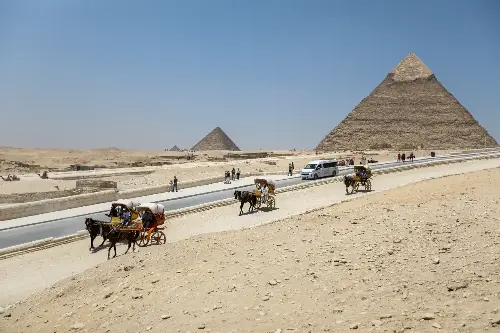
Easily the most emblematic of Egypt's ancient structures, the Great Pyramid of Giza is the oldest of the Seven Wonders of the Ancient World and the only one mostly intact today. Built as a tomb for Pharaoh Khufu around 2580 – 2560 BCE, this monumental structure was not only an incredible feat of engineering but also a symbol of the pharaoh's power and his association with the divine.
The Great Pyramid, towering at a height of around 146 metres, was the tallest man-made structure for over 3,800 years. Intriguingly, the pyramid was constructed with such precision that the base is a nearly perfect square, and the sides are closely aligned with the four cardinal points of the compass. This fascinating alignment, combined with the mystery of its construction, continues to draw researchers and tourists alike, eager to understand or simply experience its grandeur.
The Sphinx: A Riddle Wrapped in Stone
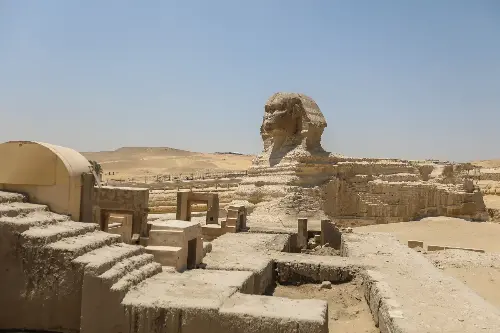
Guarding the Giza plateau is the Great Sphinx, a limestone statue with the body of a lion and the head of a pharaoh, believed to represent Khafre. Carved directly from the limestone bedrock, the Sphinx stands sentinel, its enigmatic expression fuelling countless legends and theories about its origins and purpose. The Sphinx is particularly famous for its missing nose - an absence that adds to its mystery and has captured the imagination of travellers for centuries.
The Temples of Karnak: A Journey Through Time and Divinity
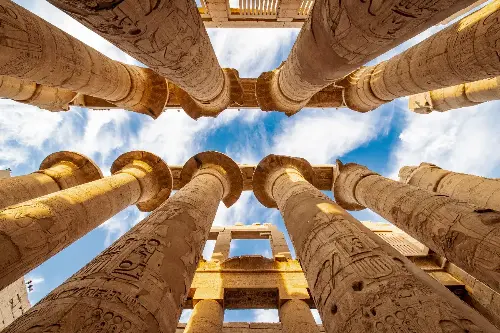
Moving south to the ancient city of Thebes, now Luxor, we encounter the staggering complex of Karnak. This was not a single temple but a conglomeration of temples, chapels, pylons, and other buildings. Remarkably, construction spanned over two thousand years, with successive pharaohs adding to the grandeur of the complex.
The most striking feature within Karnak is the Hypostyle Hall in the Precinct of Amun-Re, an area comprising 134 colossal columns arranged in 16 rows, supporting a roof that—though now partially fallen—still suggests its original majesty. Karnak's scale alone is enough to overwhelm the senses, but beyond its size, it is the intricate carvings and hieroglyphs that relate the deep spiritual and mythological significance of this site to the ancient Egyptians.
Unearthing Luxor Temple: Majestic Even in Partial Ruin
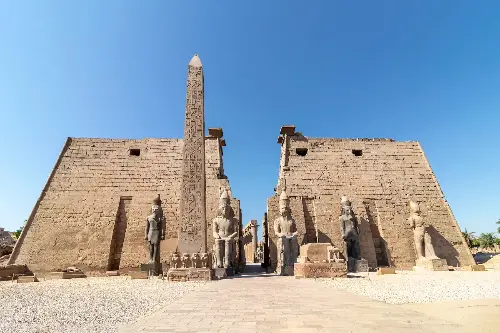
While Karnak impresses with its colossal scale, the nearby Luxor Temple enchants with its symmetrical elegance. Visitors enter along the Avenue of Sphinxes, once a processional path connecting to Karnak. This temple was dedicated to the rejuvenation of kingship and it is believed that many pharaohs were crowned here. The temple is unique for its documented history of continuous religious use, transitioning from an Ancient Egyptian place of worship to a Christian church, and finally, as a mosque that still stands today, a testament to Luxor Temple's enduring sanctity.
Abu Simbel: Colossal Monuments to Pharaoh and Deities
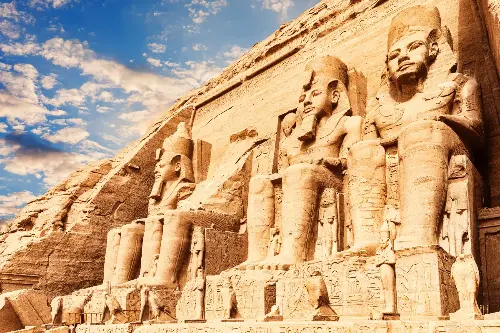
Further south lies the temple complex of Abu Simbel, originally carved out of a mountainside during the reign of Ramesses II in the 13th century BCE. These temples are famed for their colossal rock relief figures guarding the entrance, each statue depicting Ramesses II seated on a throne. Twice a year, on February 22 and October 22, an astronomical phenomenon occurs where the sun aligns to illuminate the inner sanctuary, highlighting statues of the gods and the pharaoh—a design believed to be aligned with the pharaoh's birthday and coronation day.
The temples of Abu Simbel faced a monumental challenge in the 1960s with the construction of the Aswan High Dam, which threatened to submerge them. In an impressive international effort, the temples were cut into large blocks, dismantled, and moved to a higher location, preserving them for future generations.
These ancient Egyptian structures are far more than mere tourist destinations; they are profound cultural symbols that continue to influence modern architecture, literature, and art. Their timeless allure lies not just in their historical significance but also in the sense of continuity they project—bridging the ancient and modern worlds. The passion with which they were built, the centuries over which they were honoured, and the awe they still evoke all speak to a human endeavour that transcends mere stone. Visiting them, we engage in a dialogue with our ancestors, comprehending a fraction more of the human story that is as much about the present and future as it is about the past.
